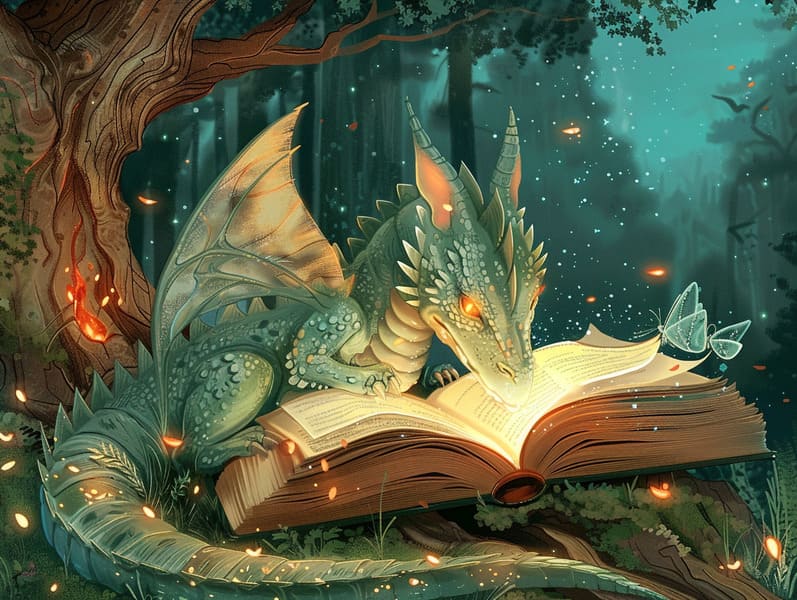The Genesis of Famous Fairy Tales with Its Unfading Captivation.
The Genesis of Famous Fairy Tales with Its Unfading Captivation.
Blog Article

Fairy tales have deep roots. These tales have been narrated from one generation to the next long before they were ever documented. They sprang from a variety of societies, including Western traditions. They were initially passed along among grown-ups, often carrying themes and messages aligned with the societal norms and beliefs of the time.
The Brothers Grimm, Jacob and Wilhelm (the Grimm brothers), were among the first to compile many of these beloved stories. Their volume, "Grimm's Story Collection," included classics like "Cinderella," "The Bread Crumb Trail," and "Schneewittchen," which have since become mainstays in the world of classic fairy tales. Similarly, Andersen's whimsical tales, such as "The Sea Maid," and "The Duckling that Could," have captivated hearts worldwide, securing their place in the pantheon of timeless fairy tales.
Despite being ancient, these stories remain as pertinent as ever, especially as children's night stories. These whimsical stories are now available in multiple formats, including artistically illustrated books, whimsical animations, and digital storybooks.
Their unwavering allure can be traced to several captivating elements:
Crucial Morals: Ancient fairy tales often offer important moral lessons. Tales like "The Tale of the Boy Who Cried Wolf" teach the merit of sincerity, while "The Hare and the Tortoise" stress the traits of perseverance and meekness. These tales offer kids clear distinctions between good and bad, guiding their moral compass in a gentle yet deep way.
Kindness and Comprehension: Ancient fairy tales frequently showcase characters facing challenges and struggles, urging listeners to sympathize with their struggles and support their triumphs. For instance, "Beauty and Her Beast" teaches us the virtue of appreciating inner worth to comprehend the inner being of a individual, promoting warmth and insight.
Cultural Understanding: Many traditional fairy tales are saturated in the cultural contexts from which they blossomed. Reading these stories can provide intriguing perspectives into different social structures, building a sense of global respect and discernment.
Inventiveness and Fantasy: The fantastical elements in traditional fairy tales—magical beings—boost children’s creative dreams. These stories guide readers to extraordinary realms, awakening inventive dreams and a sense of wonder that stays a lifetime.
Ancient fairy tales are check here not only delightful but also teaching. They serve as bewitching tools in enhancing various thinking and feeling skills in young readers. When classic fairy tales are spoken, they cultivate linguistic abilities by offering new phrases and complicated sentence structures. This practice also cultivates auditory perception and mental focus, as young readers follow the story, enthusiastic to see what happens next.
Furthermore, exploring the themes and characters of traditional fairy tales can promote reasoning skills and analytical skills. Children are shown to discern patterns, predict happenings, and realize cause and effect. These talks also help the young voice their thoughts and feelings, cultivating their emotional intelligence.
In today’s information age, the accessibility of web-based fairy tales has made these tales more acquirable than ever. Internet resources and digital apps extend ample collections of old fairy tales that can be accessed or played anytime, anywhere. Fairy tales read aloud are particularly common, making available an delightful method for children to engage with these whimsical stories. Sound books and voiced videos take characters and settings to life, often accompanied by captivating harmonies and melodies that raise the narrative adventure.
The everlasting appeal of timeless fairy tales lies in their ability to adapt to present eras while keeping their key morals. Contemporary updates of these tales often present more diverse figures and modern settings, making them relevant to today’s audience. However, the underlying themes of spirit, kindness, and honesty remain unchanged, continuing to strike a chord with young listeners of all ages.
Timeless fairy tales also offer a sense of ease and comprehensibility. They serve a well-ordered narrative with a unmistakable beginning, middle, and end, often drawing to a close with the conclusion of conflicts and the triumph of right over wrong. This assuredness can be calming for children, making available a sense of firmness in an inconstant world.
Classic fairy tales continue to entrance and train new generations, maintaining their fascination and pertinence in modern society. As kids' bedtime tales, they render a perfect blend of wonder and wisdom, nourishing moral values, empathy, and creativity. The accessibility of free fairy tales online and the widespread nature of fairy tales read aloud validate that these traditional fairy tales remain attainable to new generations.
By retaining and sharing these stories, we continue to revere the rich tapestry of tales and cultural heritage. Whether you are reading a vividly illustrated book, delving into a virtual library, or listening through an read-aloud book, the magic of famous fairy tales is always within reach. These stories show us of the unceasing effect of fairy tales and its ability to bring us together across epochs and places.
No matter if you are enjoying a beautifully illustrated book, experiencing a digital library, or listening to an sound book, the beauty of classic fairy tales is always within reach.
These stories show us of the continued impact of narratives and its ability to bond us across centuries and lands, forging a link that captivates and teaches alike.